
Behind the scenes at Lower Queen Station
Long-abandoned and seldom photographed, Lower Queen station, the never-used underground streetcar stop beneath Queen subway station, has long been at the top of my list of places to explore in Toronto. With the city struggling to build new transit, there's something incredibly compelling about an underground station built and discarded.
Lower Queen, as it's come to be known (it was never officially named, though it appears on maps as "City Hall") is the only piece of a streetcar subway planned in the years following the second world war. If provincial funding had been more forthcoming, Toronto might have built its east-west subway under Queen Street.
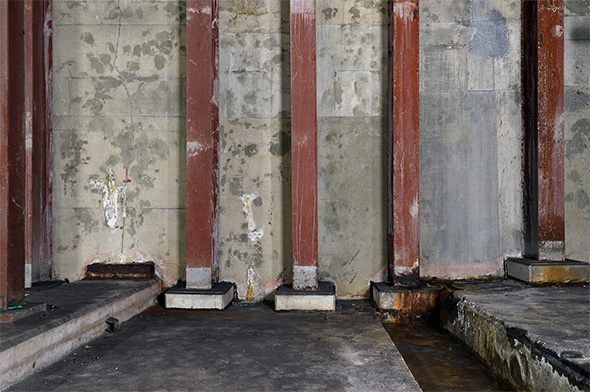
For decades before and after the construction of the Yonge line, the Queen Street subway regularly appeared on planning documents and mass transit predictions. In its earliest incarnation, it would have been a mix of open cut, underground, and elevated streetcar track between Trinity-Bellwoods Park and Logan Avenue, in parts much like the section of streetcar line between Union and Queens Quay.
One early map imagined surface stops at Trinity-Bellwoods Park, Bathurst, Spadina, and Grange Park, and underground stations at York Street, Old City Hall, and Church.
In the east end, there would be more street-level stations at Sherbourne and Parliament. Continuing east on an elevated structure, there would have been above-ground stations at the Don River, Broadview and Logan. Spur tracks would have allowed Dundas, Danforth, and Kingston Road streetcars to use the line as well.
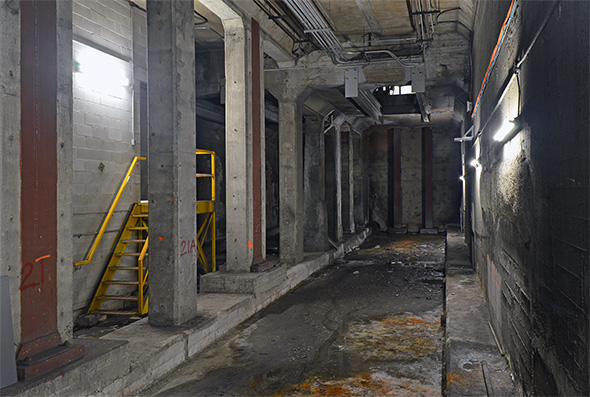
The Queen streetcar subway got remarkably far. According to Transit Toronto, an excellent TTC history resource, the proposal was overwhelmingly approved in a referendum on condition the province would chip in 20 per cent of the cost, which, of course, it didn't.
As insurance against a potentially costly future re-working of Queen station should the idea return to life, the city excavated a second track bed and set of platforms below the subway level. At either end, two massive reinforced headwalls awaited the streetcar tunnel that would never come.
Lower Queen is now tucked away behind an anonymous metal door in the walkway between the north and southbound subway tracks.
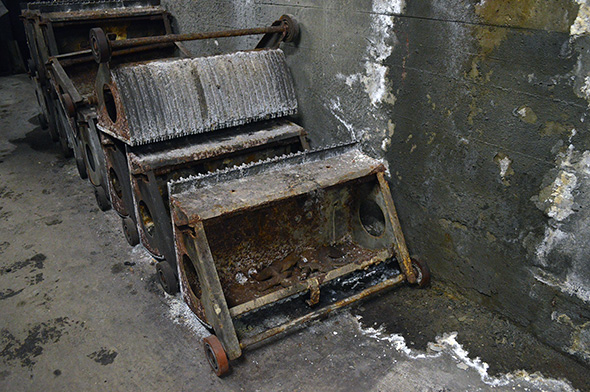
Inside it's damp, muddy, and eerily warm. There's a pile of discarded escalator steps and down some uneven stairs the main portion of the station sits empty, bathed in neon light. Water drips from the ceiling and unseen machines squeal and whir to life. Every few minutes, a train on the busy Yonge line thunders overhead.
Though the TTC has reclaimed some of the space for a ventilation system and the base of an elevator shaft, Lower Queen still easily identifiable as a transit stop. There are two low concrete platforms, two shallow track beds, and a row of support columns dividing the area in half.
"It's far more complete than you would think," says TTC spokesman Brad Ross, standing over a sewer grate that would have drained the eastbound track. "Later, there was talk of building a subway underneath Queen, which could have been today's DRL, potentially."
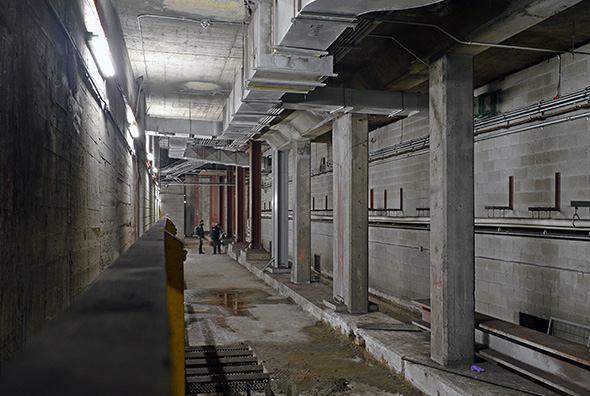
That subway, the city thought, would have also run in an open trench north of Queen Street but the idea was eventually dropped in favour of the Bloor-Danforth line and Lower Queen was doomed to remain a shell, the stuff of urban legend.
However, no visit to the TTC's abandoned areas would be complete without Bay Lower (not Lower Bay, Ross says.) The closed bottom level of Bay station, now a film set and training area, once allowed the TTC to get three lines from two by routing some Bloor-Danforth trains downtown via Museum.
The interlining idea cost millions to develop - expensive split-level rail intersections had to be built either side of Bay station - but lasted barely six months. Now, when police and fire crews aren't using Bay Lower to simulate emergencies, the station is a testing ground for new floor tiles and signal systems.
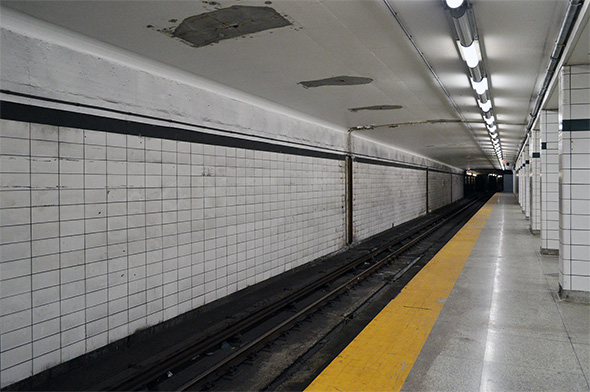
The multiple entrances to Bay Lower are easy to spot on the upper platform. Incongruous green tiles and unmarked doorways block off the stairs that once led down to the lower level, as they do at St. George. Essentially, Bay Lower is a carbon copy of the Bloor-Danforth station with the lower level sealed off.
Here are more pictures of both stations.
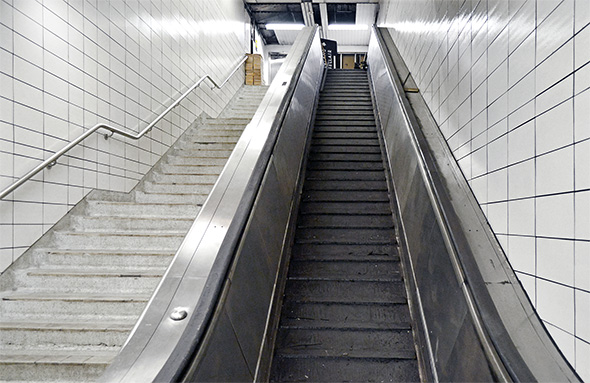
An escalator minus its steps leads up to the functional level of Bay station.
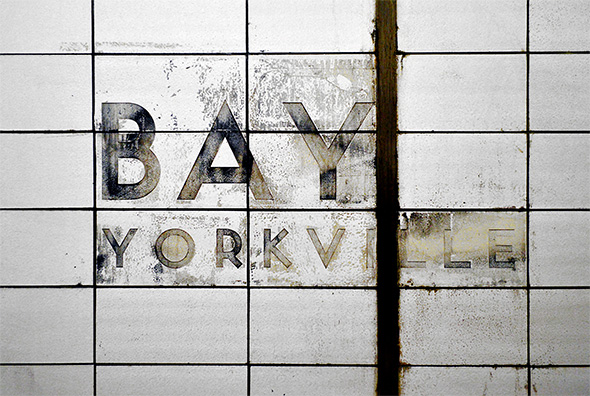
During film shoots, when Bay Lower masquerades as the New York City subway, the original signs are covered over.
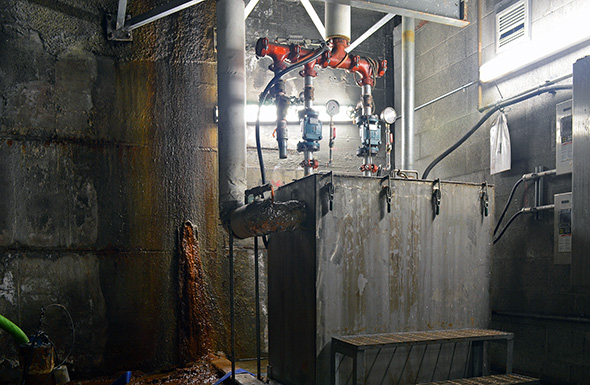
The guts of Queen station now occupy part of the Lower Queen station area.
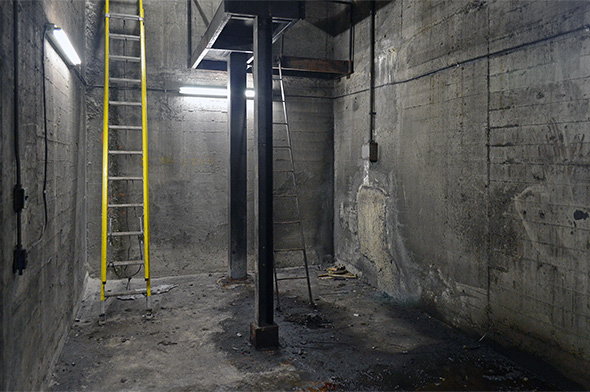
Basic cinder block rooms divide up parts of the Lower Queen platform area.
Chris Bateman is a staff writer at blogTO. Follow him on Twitter at @chrisbateman.
Images: Derek Flack/blogTO.
Latest Videos
Latest Videos
Join the conversation Load comments







